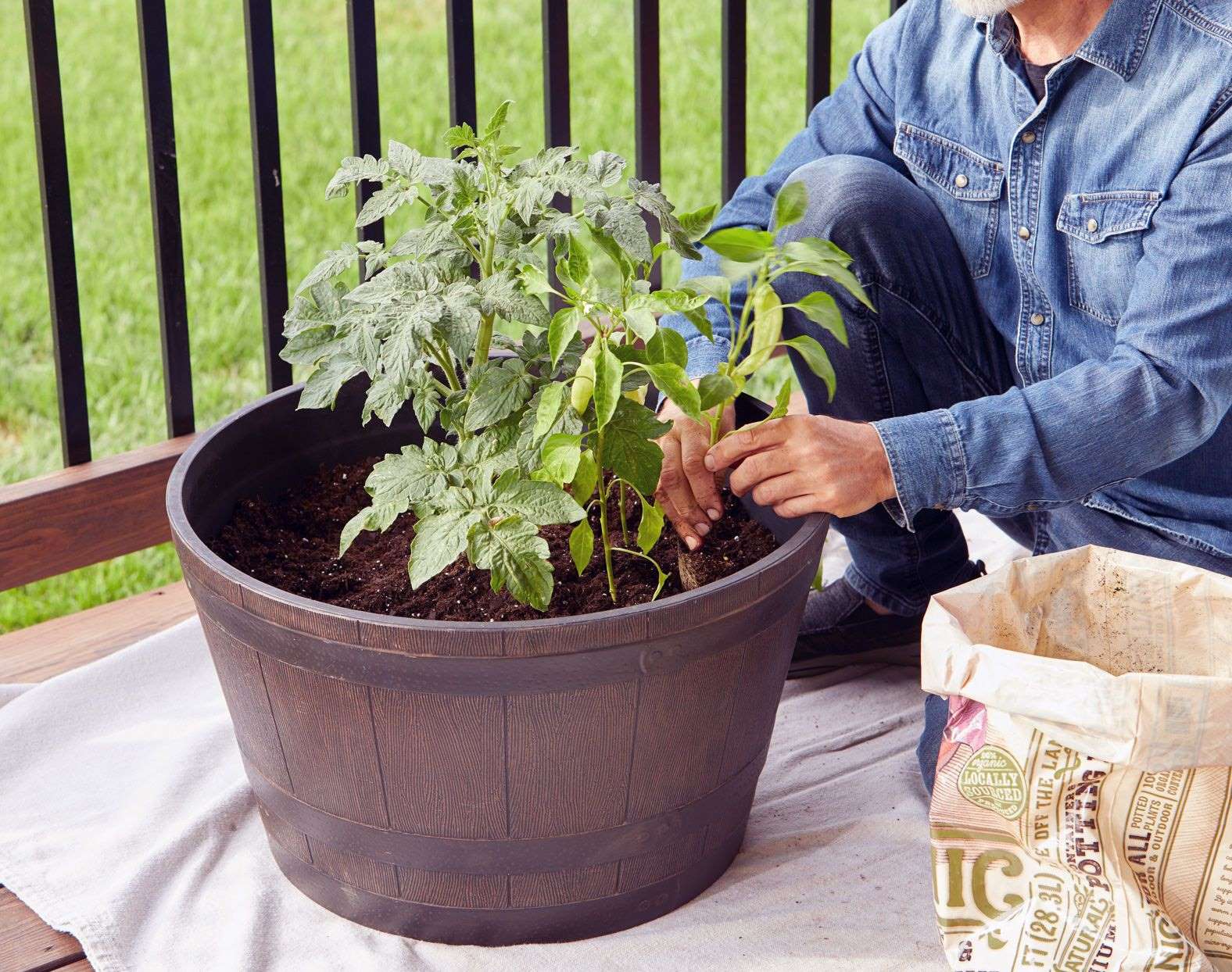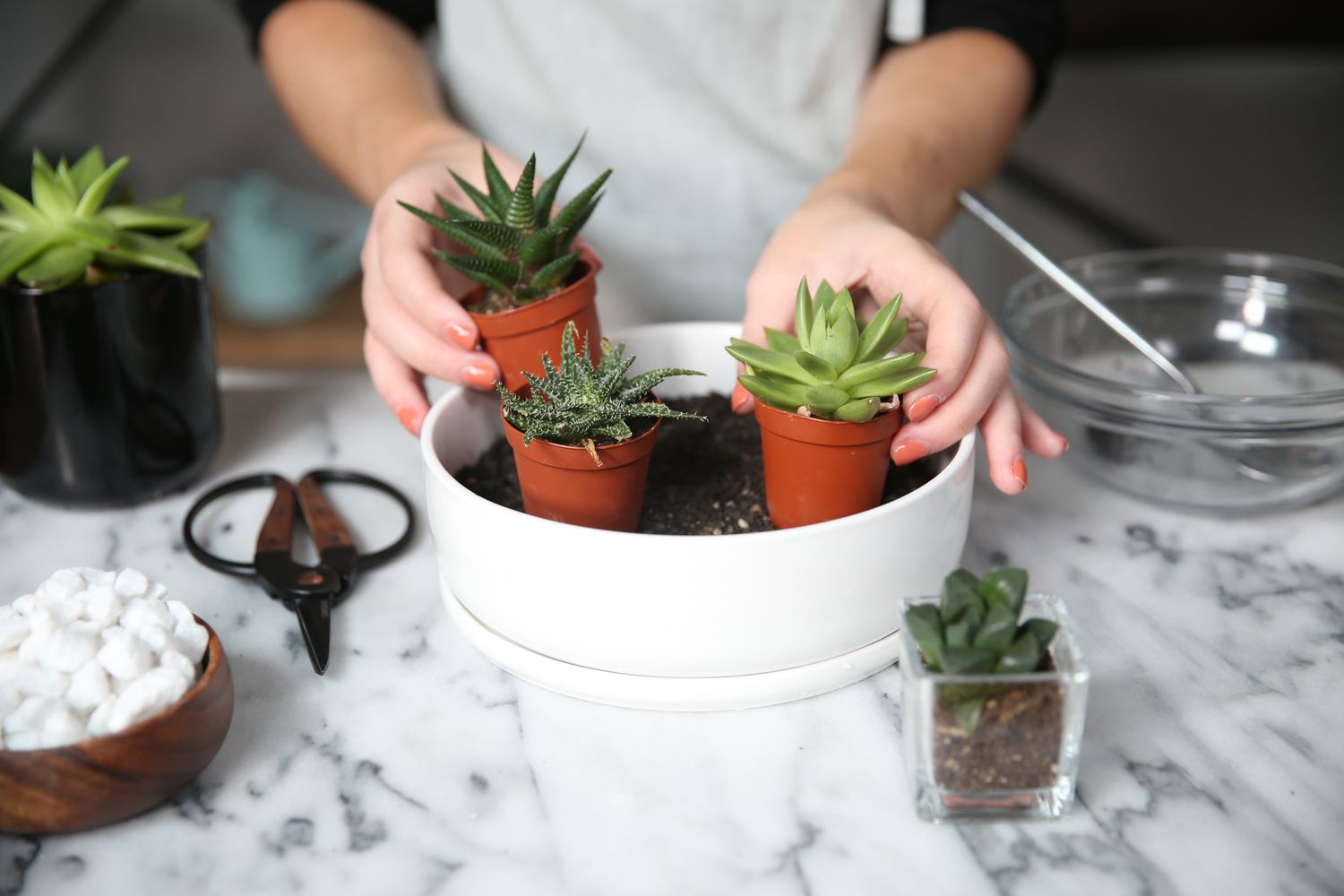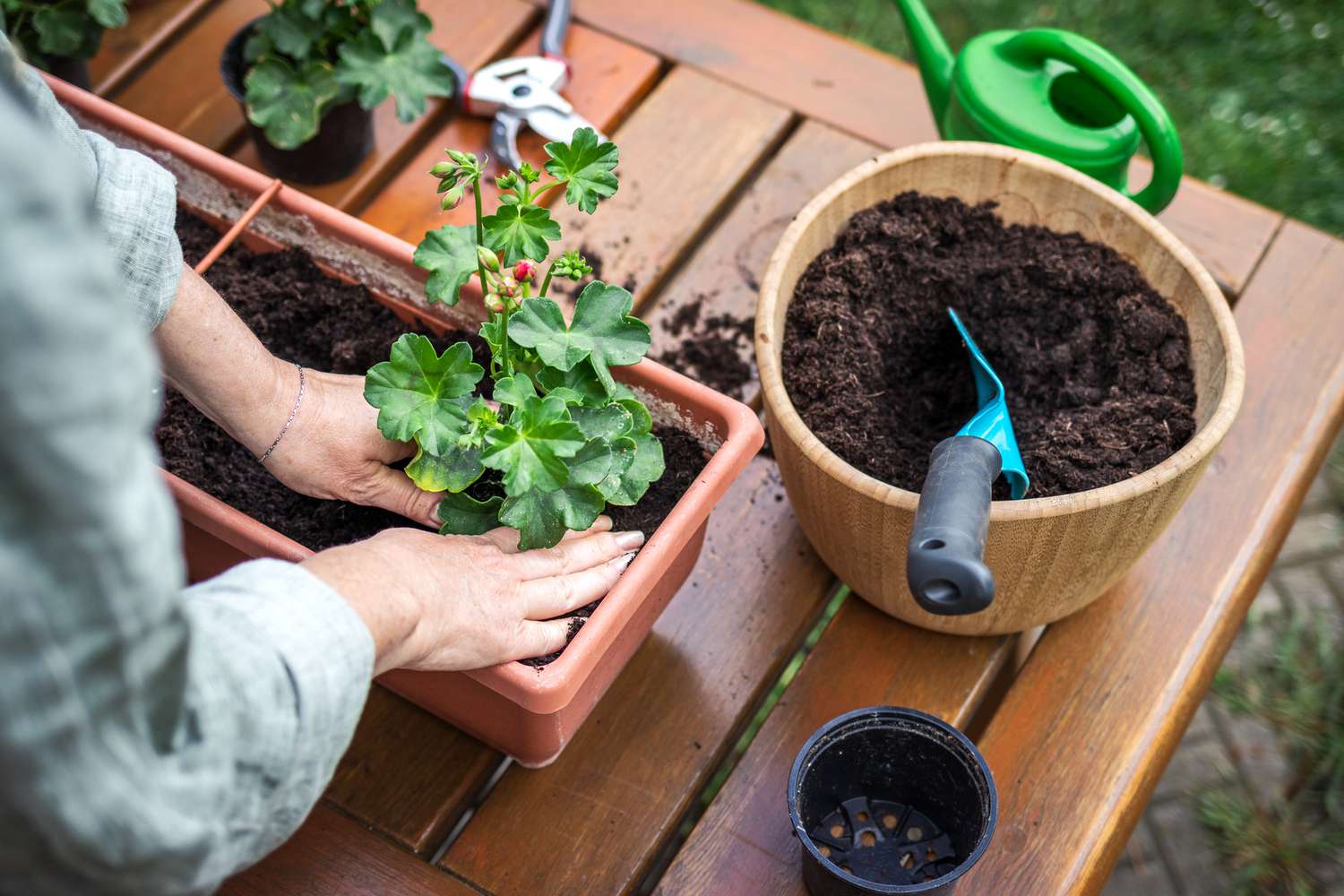Home>Gardening Basics>Understanding Soil>How To Aerate Soil In Potted Plants


Understanding Soil
How To Aerate Soil In Potted Plants
Published: February 9, 2024
Learn the importance of understanding soil and how to properly aerate soil in potted plants for healthier and thriving indoor greenery. Discover the best techniques and tips for optimal soil aeration.
(Many of the links in this article redirect to a specific reviewed product. Your purchase of these products through affiliate links helps to generate commission for Chicagolandgardening.com, at no extra cost. Learn more)
Table of Contents
Introduction
Aerating soil in potted plants is a crucial practice for maintaining the health and vitality of your green companions. Whether you're a seasoned gardener or a novice plant enthusiast, understanding the significance of soil aeration can elevate your gardening prowess to new heights. In this article, we will delve into the importance of aerating soil in potted plants, the signs indicating that your plant's soil needs aeration, and effective methods for achieving optimal aeration.
When we think about the essentials for plant growth, sunlight, water, and nutrients often spring to mind. However, the significance of soil aeration should not be overlooked. Soil that is compacted or lacking in proper aeration can impede root growth, reduce nutrient uptake, and lead to a plethora of issues such as waterlogged roots, stunted growth, and susceptibility to diseases. By understanding the benefits of soil aeration and the telltale signs that your potted plants require this essential practice, you can ensure that your green companions thrive in their confined environments.
In the subsequent sections, we will explore the benefits of aerating soil in potted plants, the signs that indicate your potted plant soil needs aeration, and effective methods for enhancing soil aeration. Let's embark on this journey to cultivate healthier, more vibrant potted plants through the power of soil aeration.
Benefits of Aerating Soil in Potted Plants
Aerating the soil in potted plants offers a multitude of benefits that directly contribute to the overall well-being of your green companions. Understanding these advantages can inspire a proactive approach to soil aeration, fostering an environment in which your plants can thrive. Let’s explore the compelling benefits of aerating soil in potted plants:
- Promotes Root Health: Adequate soil aeration allows roots to access oxygen, a vital element for their growth and development. When soil is compacted, roots struggle to receive sufficient oxygen, leading to poor root health and restricted nutrient uptake. By aerating the soil, you create an environment conducive to robust root systems, enabling your plants to absorb essential nutrients and moisture more effectively.
- Enhances Nutrient Uptake: Properly aerated soil facilitates the movement of water and nutrients to the plant’s roots. This enhanced access to essential nutrients promotes overall plant health and vigor, enabling them to flourish and resist environmental stressors more effectively.
- Prevents Waterlogging: Soil compaction can result in poor drainage, leading to waterlogging and depriving plant roots of the oxygen they need. By aerating the soil, you can mitigate the risk of waterlogging, ensuring that excess water can drain effectively, and roots can access the oxygen necessary for their survival.
- Reduces Disease Risk: Well-aerated soil creates an environment that is less favorable for certain soil-borne diseases. Adequate oxygen levels in the root zone can deter the proliferation of pathogens, helping to safeguard your plants against potentially devastating diseases.
- Improves Soil Structure: Regular soil aeration contributes to the overall structure of the soil, preventing compaction and promoting a healthy balance of air, water, and organic matter. This, in turn, enhances the soil’s ability to support root growth and microbial activity, fostering a thriving ecosystem for your potted plants.
By recognizing and harnessing these benefits, you can elevate the care and maintenance of your potted plants, nurturing an environment in which they can flourish and bring joy to your indoor or outdoor spaces.
Signs That Your Potted Plant Soil Needs Aeration
Recognizing the signs that indicate your potted plant soil requires aeration is essential for maintaining the health and vitality of your green companions. By being attentive to these indicators, you can proactively address soil compaction and ensure optimal growing conditions for your plants. Here are the key signs that your potted plant soil may be in need of aeration:
- Poor Drainage: If you notice that water tends to pool on the soil surface rather than being absorbed, it could be indicative of soil compaction. Poor drainage inhibits the movement of water through the soil, leading to waterlogging and depriving plant roots of essential oxygen.
- Slow Growth or Yellowing Leaves: Stunted growth and yellowing leaves can signal that your plants are struggling to access the nutrients they need. Compacted soil hinders root development and nutrient uptake, resulting in diminished growth and potential nutrient deficiencies.
- Water Runs Off the Soil Surface: When watering your potted plants, observe how the water behaves. If it runs off the soil surface rather than being absorbed, it suggests that the soil has become compacted, impeding the infiltration of water and nutrients to the root zone.
- Visible Soil Compaction: Gently press on the soil surface. If it feels hard and dense, it is likely compacted and in need of aeration. Compacted soil restricts the movement of air, water, and nutrients, hindering the overall health and vitality of your plants.
- Presence of Waterlogged Soil: Excessive moisture retention in the soil, leading to waterlogged conditions, is a clear indication of poor soil aeration. Waterlogged soil deprives plant roots of oxygen, predisposing them to stress and potential root rot.
By remaining vigilant for these signs, you can intervene promptly to address soil compaction and provide your potted plants with the optimal growing environment they need to thrive.
Methods for Aerating Soil in Potted Plants
Implementing effective methods for aerating the soil in potted plants is essential for promoting a healthy and conducive growing environment. By utilizing appropriate techniques, you can enhance soil structure, facilitate nutrient uptake, and promote robust root development. Here are several methods for aerating soil in potted plants:
- Loosening the Soil: Using a small hand trowel or fork, gently loosen the top layer of the soil without damaging the roots. This process helps to break up compacted soil, improve aeration, and enhance water infiltration.
- Adding Organic Matter: Incorporating organic matter such as compost, peat moss, or well-rotted manure into the soil can improve its structure and aeration. Organic matter also provides essential nutrients and supports beneficial microbial activity in the root zone.
- Using Aeration Tools: Handheld aerating tools, such as spike aerators or soil aerating forks, can be utilized to create small channels in the soil, facilitating air and water movement. Care should be taken to avoid damaging the plant’s roots during this process.
- Applying Soil Amendments: Utilize soil amendments designed to improve aeration, such as perlite or vermiculite. These lightweight materials help to create air pockets in the soil, enhancing its porosity and promoting better drainage.
- Implementing Topdressing: Applying a layer of organic mulch or compost on the soil surface can aid in improving aeration and moisture retention. As the topdressing material breaks down, it contributes to the overall health and structure of the soil.
It’s important to assess the specific needs of your potted plants and choose the most suitable method for aerating the soil based on their individual requirements. Regular monitoring and maintenance of soil aeration will contribute to the long-term health and vitality of your cherished green companions.
Conclusion
Soil aeration is a fundamental aspect of potted plant care, playing a pivotal role in fostering optimal growing conditions and ensuring the health and vitality of your green companions. By understanding the benefits of soil aeration, recognizing the signs indicating the need for aeration, and implementing effective methods to enhance soil structure, you can cultivate a thriving environment for your potted plants.
As you embark on your journey to elevate the care of your potted plants, remember that soil aeration promotes robust root health, enhances nutrient uptake, and mitigates the risk of waterlogging and soil-borne diseases. By remaining attentive to the signs of soil compaction and proactively addressing them through suitable aeration methods, you can create an environment in which your plants can flourish and thrive.
Whether you’re tending to lush indoor foliage or nurturing vibrant outdoor displays, the practice of soil aeration is a cornerstone of successful potted plant care. Embrace the art of soil aeration as a means to support the well-being of your plants, and revel in the beauty and vitality they bring to your living spaces.
By incorporating the knowledge and techniques shared in this article into your plant care routine, you are empowered to cultivate a nurturing environment that fosters the flourishing growth and resilience of your cherished potted plants.





